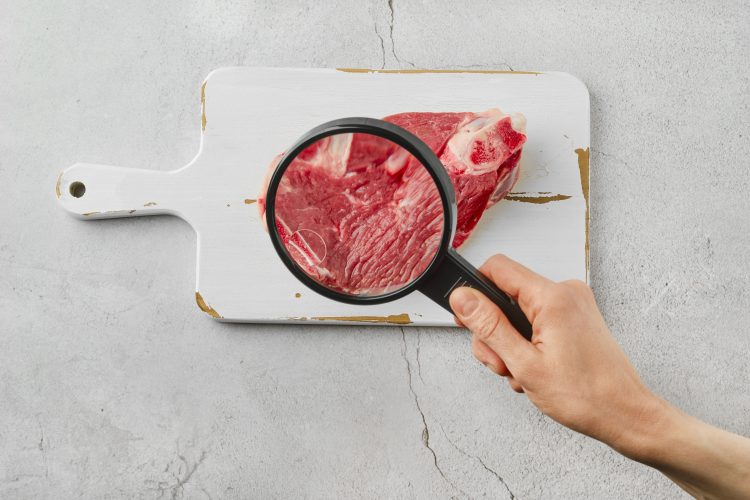Chefs and cultured meat: A recipe for culinary revolution
- Like
- Digg
- Del
- Tumblr
- VKontakte
- Buffer
- Love This
- Odnoklassniki
- Meneame
- Blogger
- Amazon
- Yahoo Mail
- Gmail
- AOL
- Newsvine
- HackerNews
- Evernote
- MySpace
- Mail.ru
- Viadeo
- Line
- Comments
- Yummly
- SMS
- Viber
- Telegram
- Subscribe
- Skype
- Facebook Messenger
- Kakao
- LiveJournal
- Yammer
- Edgar
- Fintel
- Mix
- Instapaper
- Copy Link
Posted: 12 December 2023 | Philip Saneski | No comments yet
Sharing insights from CMS23, Philip Saneski reveals the collaborative journey of chefs and cultured meat firms, pioneering innovations and forging a sustainable culinary landscape to spark consumer interest.


By Philip Saneski
The 2023 Cultured Meat Symposium (CMS23) took place on November 2-3, 2023 in Las Vegas, Nevada. Historically in San Francisco, the Cultured Meat Symposium is an annual gathering of industry leaders that discuss the future of cell-cultured meat and seafood technologies.
This year’s theme was product development and manufacturing. Topics included process improvements, commercial scalability, hybrid products, AI automation, fundraising, government regulations, and my favourite, “Culinary Innovation: Exploring Cultured Meat with a Chef,” the title of my keynote presentation that started the second day of CMS23.
In this article I will be sharing my key takeaways and examples of long-term strategies that excite the food industry.
Chefs are first-to-market trend setters
More than simply what is trending, chefs are innovators who speak on the plate and continuously think about what is next. Often chefs have thought of how to make an innovative ingredient or sustainable product taste great before anyone else. One example is ten years ago a 3-Michelin star restaurant called Manresa in Los Gatos, California served a cauliflower risotto.
Shortly thereafter, cauliflower started to appear on the center of the plates across several fine-dining restaurants. Now the cauliflower trend has scaled to what seems to be every aisle of the grocery store—from rice to pizza to buffalo wings, among other categories. We also saw this with other vegetables like kale.
More recently, David Chang put the Impossible burger on his single-restaurant menu in 2016. Now the Impossible meat is in over 45,000 locations globally.
Consumers trust chefs, and that can support cultured meat companies
Since chefs have been setting the trends before mass consumer adoption, chefs are data points before any quantitative data exists. They sit in the middle of our giant food system as thought leaders and translators people trust.
Accordingly, chefs are the people who have power over our food system and can shape not only how we eat, but also our climate future. Many even have access to their city officials and policymakers who dine at their restaurants—which can be an important regulatory asset.
Equally, cultured meat companies can support chefs
Chefs have a powerful voice that inspires consumer habits, but there is only so much chefs (or anyone) can do on a restaurant plate each night.
Right now chefs want to figure out how to have an impact beyond the traditional “back-of-the-house” kitchen; and right now we need leaders in to culinary industry to step up to do more than plate a small number of dishes each service. Serving a unique, cultured meat product can increase foot traffic, visibility, position chefs as a trend setting sustainability thought leader, and provide multiple business lines for restaurants. This is especially relevant now as restaurants all over are closing—including David Chang’s Two Michelin star Momofuku Ko.
Aleph Farms makes historic European cultivated meat submission
Offering cultured meat can broaden or even better engage high-end clientele to a restaurant community for their next luxury dining experience. One example I gave was having a “bites” menu section that would increase check averages. Another example is to start with a limited time offer. Cultured meat companies can then have a marketing campaign that adds customers and proves serving cultured meat is a strong value proposition that increases revenue. Even if not with a Michelin star chef, building a playbook with lower stake chef-partners will make launching future partnerships more successful.
As CMS23 guest Kaitlin Grady, Director of Strategic Partnerships and Public Affairs, Clever Carnivore, Inc, Shared: “Chef engagement has been top of mind for Clever Carnivore as we develop our prototype products, and Philip’s presentation provided practical tools for fostering this crucial partnership. This takeaway especially resonated: “Chefs are uniquely positioned to share what matters and why.”
Co-innovation partnership
Chefs and cultured meat companies can form co-innovation partnerships that enable a more rapid and successful market entry. Cultured meat companies can hire chefs as an “R&D Culinary Consultant” to test their product on restaurant menus for live feedback, and chefs can continuously improve the product from there. Restaurants can be a consumer testing ground, a real-world sensory panel. This is especially valuable for restaurants if they conducted this as a ticketed event on their slowest business days of the week. Long-term, this early R&D could lead to a smoother commercialisation path and more refined product, be it better in taste, new SKUs, different flavors, form factors, or cost effectiveness.
One of the CMS23 producers summarised: “Philip’s presentation at the Cultured Meat Symposium was eye-opening to many in the cultivated meat industry,” said Anita Broellochs, Producer at SVCMS and Founder of Balletic Foods.
“Considering every company will have to go to market initially with a blended product, Philip highlighted how chefs can be involved from the very start ensuring the end product is something that consumers will seek out, whether that’s because of taste, accessibility, nutritional value, or presentation of the product. It was truly inspiring to hear thoughts from a chef firsthand and learn how companies can get started in collaborating with a chef.”
Culinary directions
Chefs need creative freedom with cultured meat. One of the CMS23 topics was that companies will have to enter the market with hybrid end products that use their cultured meat as an ingredient in a total formulation. This is an exciting opportunity for chefs who love innovation. They could add miso, caramelised onions, and black garlic to cultured beef, stuff charcoal-smoked garlic rice into cultured chicken wrapped in crispy yuba skin, or add roasted porcini mushrooms to cultured seafood, as examples.
In addition to blended products, there are four culinary directions for chefs:
- Familiar products consumers would love otherwise, then add cultured meat to it (ex: burger, hot dog, Indian butter chicken);
- Upscale products where we would not have to sacrifice a whole animal for the highest quality meat and seafood (ex: wagyu filet mignon, bluefin tuna);
- Familiar products but better and easier to cook (ex: healthier, chicken breast that does not dry out, less “fishiness” flavor symbolic of decaying fish);
- Completely novel products (ex: artistic shapes).
Chefs as innovators, advocates and trendsetters
Chefs are major stakeholders in the future of food and will be a key ingredient in making cultured meat and seafood a craveable eating experience for consumers. To quote one chef attendee:
“As a chef, my main take away from CMS23 is the need for collaborative innovation between scientists and chefs. While the replication of farm-raised meat taste and texture is vital, these principles will come in time as cultured meat is more readily available. The more that cultured meat companies realize the role chefs play as trusted translators of culinary arts and science, the more culturally acceptable cultured meat will become,” said Kevin Markey, Ph.D Candidate and Teaching Assistant, Foods Lab Department of Nutrition & Food Science, and Synergy Grant, Engineered Biomaterials Research Lab, University of Vermont
What if cultured meat was the new cauliflower? Could Las Vegas be a hot spot for consumers looking for unique experiences that include cultured meat tastings?
About the author


Philip Saneski has an extensive fine-dining culinary background, experience starting an upcycled food company, has worked for CPG consultancies and built impact-driven social enterprise at Farming Hope. He lives in the San Francisco bay area and currently consults for a wide range of companies working towards a better future of food.
Related topics
Cultured Meat, Research & development, retail, The consumer, Trade & Economy






